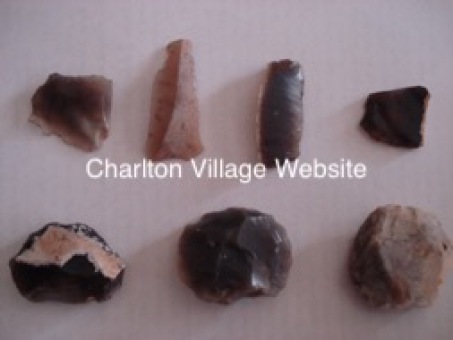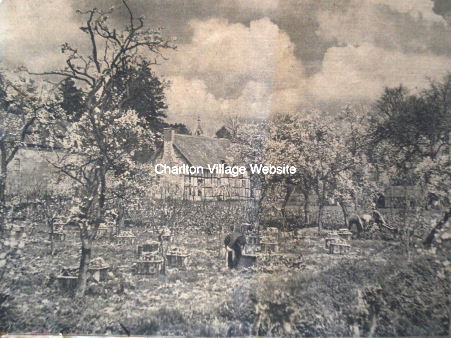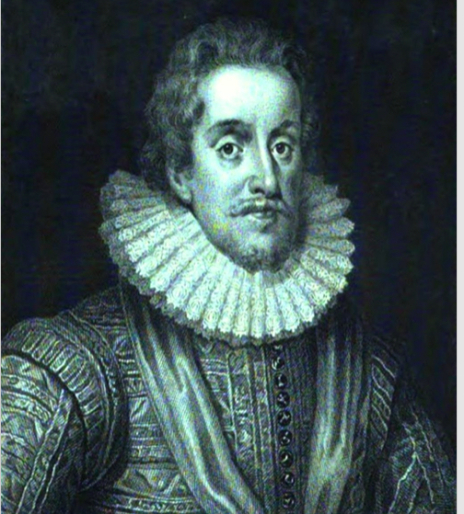
The rich land on the banks of the Avon made the area that now includes Charlton village, very attractive for human occupation. Finds of Mesolithic and Neolithic flint and stone tools, remains of bronze age burial mounds, and Iron Age and Roman farmsteads, show continuous human activity in the village since the earliest prehistoric times.
At the end of the Roman period, Germanic migrants merged with native Britons to form a new Anglo-Saxon culture and name Ceorlatuna was given to the village, which means “farm of free peasants”. In 780, Offa, the Saxon king of Mercia, granted Charlton to the church of Worcester. After the Norman conquest, part of manor was stolen from the church by Richard Bursar, a Norman Knight, and after his death it was subsequently owned by a several families including the Botelers and the Marmions. Tenants held the manor from these families and their descendants became known as the de Charltons who would have lived in the medieval manor house. Alicia, the last of the de Charltons married William de Handsacre in the mid thirteenth century and in 1390 Richard Dineley inherited the manor of Charlton through his marriage to Eleanor, the Handsacre heiress. The Dineley family owned the manor for the next four hundred years and rebuilt the medieval manor house in Elizabethan style in 1575 and again in 1702 in red brick William and Mary style. The last Dineley owner of Charlton, Sir John, was murdered by his brother and the estate was sold.

After over a hundred years of absentee landlords, in 1863 Henry Workman, solicitor, landowner and Mayor of Evesham, acquired the estate and moved into the manor house. He was very benevolent towards the village and saw it as his responsibility to improve the religious observance and education of his villagers so converted his Elizabethan tithe barn into a church and his coach house into a Sunday school. He also contributed in 1872 to building a bridge over the Merry Brook at the east end of green where previously there had been a ford. The opening of the church and bridge in that year coincided with Workman’s 70th birthday and great celebrations were held in the village.
Ten years later, Workman sold the estate to William Faulkner who rebuilt the west wing of the manor house, which had burnt down around 1800 and also erected a large stone sheep wash on the village green, using water diverted from the brook. In spite of having left the village, Workman maintained his good works for Charlton, setting up an endowment to ensure funding for a new schoolroom he built in 1879. The trust still operates under the name of his brother, Joseph Baker Workman.
The manor house, which the Faulkners sold in the 1930s, was a prisoner of war camp at the end of the war, having earlier been occupied by the Womens Land Army. It was subsequently unoccupied for many years and was allowed to deteriorate and was sadly demolished in the early seventies. Only the Dovecote remains of the original buildings.

The village Green has always been a centre of village activities. To the north of the green was a half -timbered farmhouse, part of which still stands, with barns and a rickyard. Opposite this was a ford across the brook. To the south, alongside pollarded willow trees which for many years covered the Green, was a path in front of several half-timbered buildings, all but one of which have now disappeared. This path is believed by some to be on a ley line, a line of energy passing through the earth. It was also a coffin path taking the deceased up to Cropthorne church for burial. It is said that this right of way was kept open as long as at least one coffin passed along it each year. The Charlton bier can still be seen in the almonry museum in Evesham. In 1964 a village green committee was formed which organised the removal of the sheep wash and the willow trees and cleared all the rubbish that had accumulated in the brook. The owners of the green then sold it to the village for minimal sum which was obtained by a door to door collection around the village.

During the English civil war, the green was the site of the Battle of Charlton in 1645. Sir Edward Dineley was leader of the Worcestershire Clubmen, an organisation formed to protect local property from soldiers of the garrisons at Evesham and Worcester who were marauding over the countryside plundering cattle and crops. Although he was initially a royalist, Dineley and his clubmen declared for Parliament. On 9th December, Prince Rupert, a Royalist leader was on his way to Oxford from Worcester with 160 cavalry and Edward Dineley decided to intercept him in Charlton and try to capture him. He placed his men across the road to the east of the green and waited. Rupert saw he was outnumbered but charged and cut through Dineley’s men. Five were killed and several wounded, including Dineley himself, who shortly afterwards died probably of wounds received. His tomb can be seen in Cropthorne church.
Over the last hundred years the lifestyle of the villagers has changed beyond recognition. At that time, almost everyone was involved in farming or market gardening, now people have a wide range of jobs, often commuting considerable distances. However, we still retain many of the traditions of a country village with much communal and social activity revolving around the church, The Old Schoolroom and the pub.
For additional information about the history of Charlton village please contact:
Julian Hawley – Jdhawley72@gmail.com